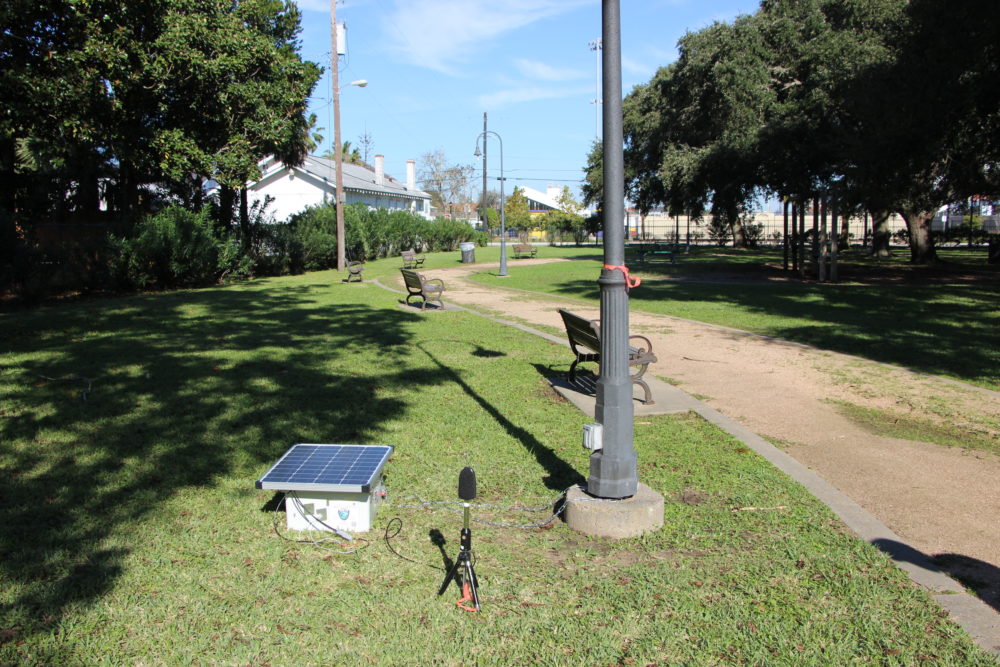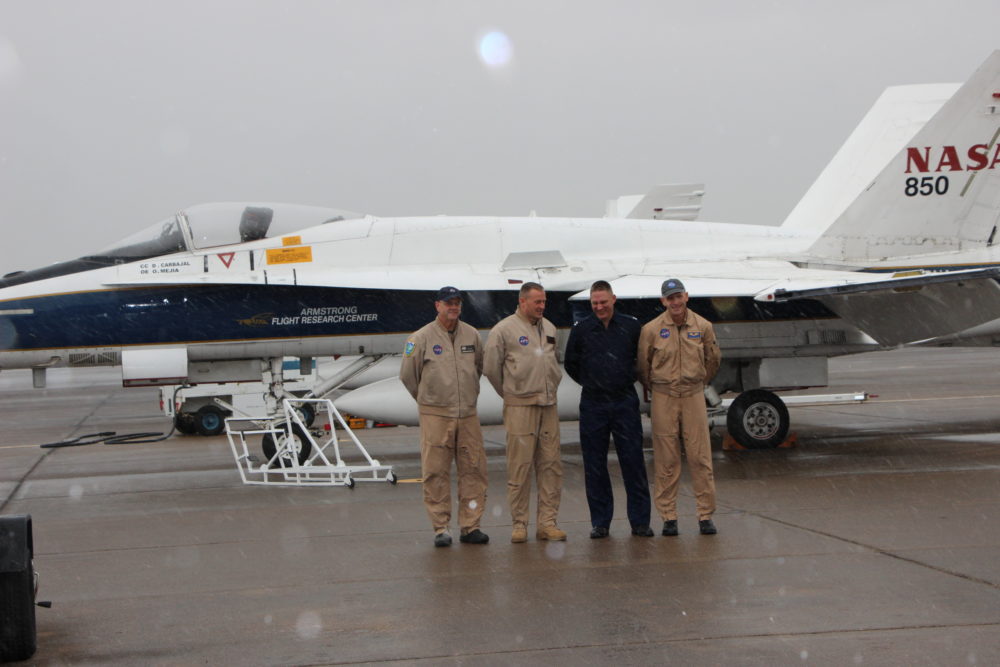Listen
Supersonic commercial planes could cut travel time in half. You could fly from Houston to New York in about an hour, or from Houston to Dubai in just under nine.
The problem? When a plane breaks the sound barrier it creates a sonic boom, a sound so loud and disruptive that the FAA has banned civil planes from flying that fast overland, and within a certain distance of the shore.
But, over the past several decades, NASA has been developing technology to make softer sonic booms and bring supersonic transportation to the commercial industry.
"NASA's plan is to design the X-59 airplane, which will create quiet sonic booms," NASA principal investigator, Larry Cliatt, said at a media event at Ellington airport. "We will fly that across the nation and different communities, to prove that we have the technology to make these lower sonic booms."
Most recently, NASA's research for the X-59 project brought them to Houston's airspace, where they tested out "quiet sonic thumps" in Galveston and measured the community's reaction to the noise.
"It's reminiscent of the sound of somebody dumping a garbage truck, but you could tell that wasn't it, it was just that sort of loud thump sound," Galveston resident Craig Cahill, said.
Others compared the sound to car doors slamming, thunder in the distance, and dynamite, while some said it made their windows rattle. "I dont think it’s much worse than if you get a hotel at Hobby [airport] at night," said Frank Gonzales, who works at the McGuire-Dent Recreation Center in Galveston.
But some residents didn't even hear the noise. "I really haven't experienced anything," said Amy Hassel, a Galveston resident who works on The Strand.
A Simulated Sound
But what they were hearing — or not hearing — wasn't actually the sound of the X-59.
"We don’t have our X-59 airplane yet," Cliatt said. "We are designing that, and hope to be flying that in the next five years, so we need a way to kind of simulate what the quieter sonic booms will sound like, and that's what we're doing now."
To mimic the noise NASA expects the X-59 to make, F/A-18 research planes took off from Ellington airport and flew over the Gulf of Mexico. There, they did a special maneuver that created a sonic boom out at sea, but that arrived as a "quiet sonic thump" in Galveston.
The aim was to measure how the community in Galveston responded to the sound, and to develop best practices for measuring community responses during future testing once the X-59 demonstrator aircraft is built.
“It’s kind of a lessons learned or pilot program for the future community response tests that we will be doing,” Cliatt said. "Right now we’re learning how to recruit people; we’re learning how to communicate with the people that we’ve recruited; how to communicate with the community itself to let them know that we’re coming and placing these sonic booms in their community.”
There were also noise sensors placed around Galveston to complement the data collected from residents.

The Next Steps
The technology isn't as far off as it may seem. In April, Lockheed Martin was awarded the contract to build the X-59, and last week they started building the first components of the plane.
The X-59 will be a single pilot demonstrator aircraft, and by 2023, NASA hopes to start flying it over various communities in the US to measure their reaction to the noise, using the methods learned in Galveston. That data will then be provided to the FAA and the International Civil Aviation Organization to aid in how they craft future regulations regarding commercial supersonic flight.
A few private companies are also developing their own quiet supersonic plane technology.
"We're talking about a future where people can spend less time traveling to their destinations and more time at those destinations, seeing family or working or visiting new spots. It's a way to shrink the world, to shrink the globe, and it's exciting to be a part of that future," Jonathan Rathsam, a NASA research engineer, said. "Not everybody gets to fly to space, but many, many people in the country get to fly on aircrafts."

 79 °F
79 °F


